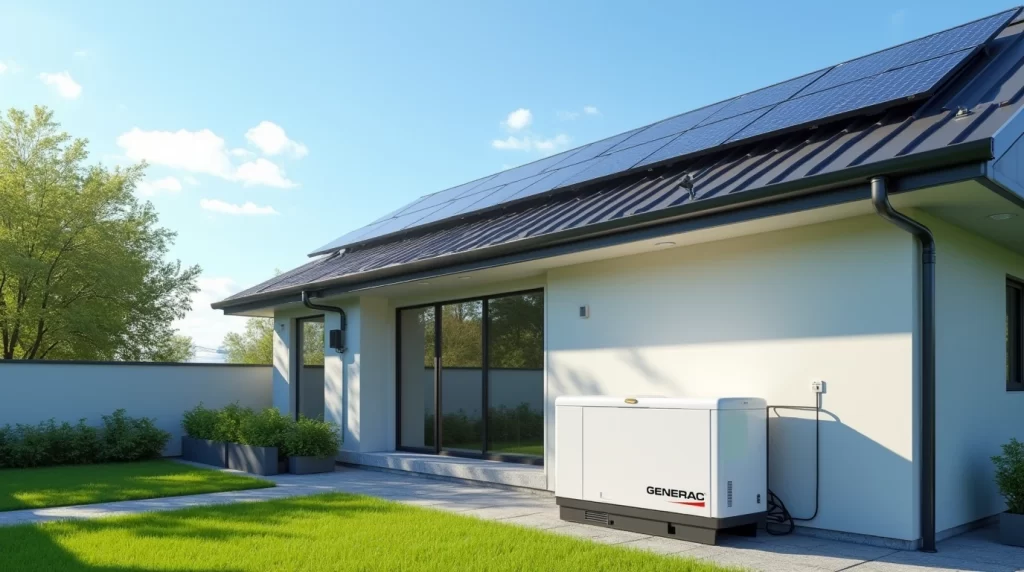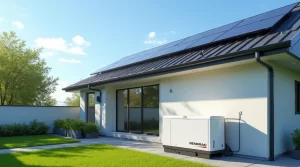As solar power adoption continues to rise across Utah and beyond, more homeowners are exploring hybrid solutions that combine solar energy with backup generators. Why? Because even the sunniest states experience cloudy days and unexpected outages—and that’s where generator and solar panel integration delivers the best of both worlds.
In this article, we’ll walk you through the benefits of hybrid energy, explain how the system works, and provide a step-by-step guide to integrating your generator with solar panels for a sustainable and reliable power setup.
Why Consider Hybrid Power for Your Home?
1. Uninterrupted Power Supply
Solar panels work great—until night falls or a snowstorm rolls in. A generator picks up where your panels leave off.
2. Maximum Efficiency
During the day, your solar system powers your home and charges your batteries. At night or during extended outages, your generator ensures essential loads remain active.
3. Lower Fuel Costs
With solar doing the heavy lifting, your generator runs less often—saving fuel, reducing wear, and lowering maintenance.
4. Long-Term Resilience
Hybrid systems are ideal for off-grid properties, areas with unreliable utilities, or families looking to future-proof their homes.
👉 Related Post: Is It Worth Getting a Whole Home Generator?
How Does Generator and Solar Panel Integration Work?
A hybrid power system generally includes:
- Solar panels
- An inverter (grid-tied or hybrid)
- A battery bank (optional but recommended)
- A backup generator (usually propane or natural gas)
- A transfer switch or automatic controller
When the sun is out, solar powers the home. When power demand exceeds solar and battery capacity, the generator kicks in automatically to take over or recharge the system.
Step-by-Step Guide to Integrating Your Generator with Solar Panels
Step 1: Evaluate Your Current Electrical System
Start by assessing:
- Your current solar setup (panel wattage, inverter type, battery storage)
- Your home’s energy needs during outages
- Existing generator size or plans for a new one
🔧 Tip: Work with a licensed electrician to analyze your system’s capacity and upgrade needs.
Step 2: Choose a Compatible Inverter
Some inverters support generator input directly (like hybrid or off-grid inverters), while others may require additional equipment.
Look for inverter models that support:
- Automatic generator start (AGS)
- Battery charging from AC sources
- Seamless switching between solar and generator power
Step 3: Install an Automatic Transfer Switch (ATS)
This switch detects when grid power is lost and automatically:
- Transfers the load to your generator.
- Signals the generator to start.
- Switches back when the grid returns or solar covers the load again.
Manual transfer switches can be used, but automatic systems are safer and more convenient—especially during storms or while you’re away.
Step 4: Connect the Generator Safely
Have a certified technician:
- Install dedicated circuits for the generator.
- Wire the generator to the inverter input or battery charger port (depending on your setup).
- Ensure code compliance and local utility requirements.
👉 Learn how Kendrick Electric ensures code-compliant installations
Step 5: Configure Generator Runtime Logic
If your system includes a battery bank, configure your inverter or hybrid controller to:
- Prioritize solar and battery usage
- Trigger the generator only when battery charge drops below a set threshold
- Avoid unnecessary generator use during peak sun hours
Step 6: Test and Maintain the System
Run a full test to simulate a power outage. Check:
- Switching speed
- Battery charging from generator
- Load coverage and inverter behavior
Set a regular maintenance schedule to inspect:
- Fuel lines
- Generator oil levels
- Solar panel performance
- Inverter logs
👉 Related Read: Generator Maintenance for Winter
What About Battery Storage?
While not required, adding a home battery system like Tesla Powerwall, Enphase, or Generac PWRcell:
- Reduces generator runtime
- Enables overnight power
- Optimizes energy usage based on time-of-use rates
Important Safety & Compliance Notes
- Permits may be required for generator hookups in most Utah counties.
- All generator-to-solar integrations must comply with NEC 2023 and utility interconnection standards.
- Always hire a licensed electrician to avoid dangerous DIY risks.
👉 Essential Tools for Basic Electrical Maintenance
Conclusion
Combining a home generator with solar panels gives you the reliability of backup power and the sustainability of clean energy. With the right equipment, smart wiring, and professional installation, your hybrid system can deliver peace of mind all year long—even when the grid fails.
Need help designing or upgrading your hybrid power system?
📞 Call Kendrick Electric at (435) 752-1888 or contact us here to schedule a consultation. Our licensed electricians specialize in solar-generator integration and code-compliant solutions across Utah.



